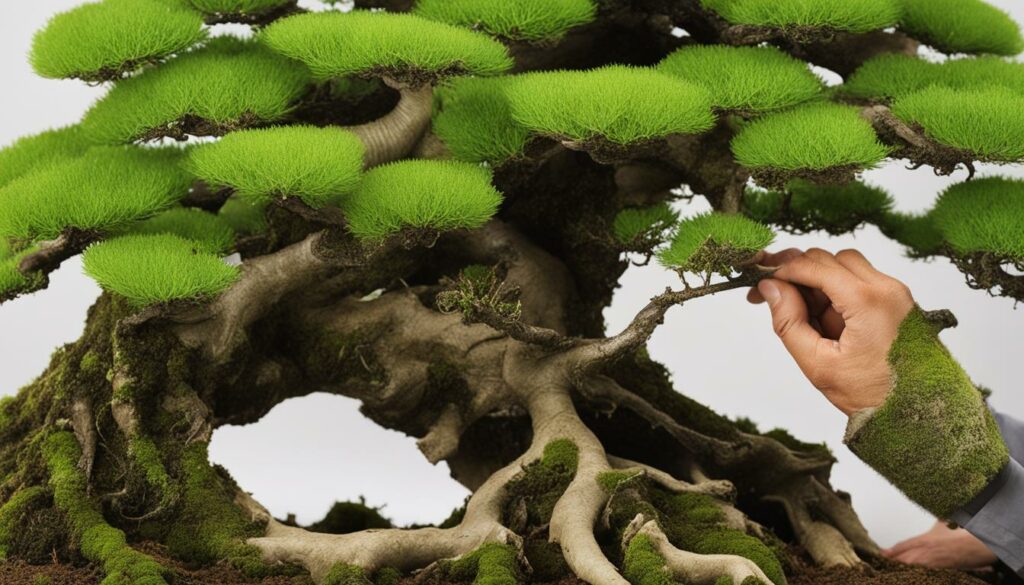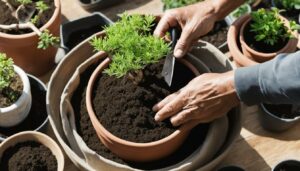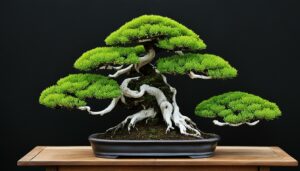Welcome to an in-depth exploration of air layering for bonsai cultivation. This advanced technique is ideal for growing bonsai with robust root systems, ensuring thriving and healthy trees. By studying the secrets of air layering, you can take your bonsai cultivation skills to the next level.
Key Takeaways:
- Air layering is an advanced technique for growing bonsai with strong roots.
- Bonsai cultivation requires careful nurturing and consideration.
- Choosing the right plant is crucial for the successful implementation of air layering.
- Tools and materials needed for air layering include rooting hormone and pruning shears.
- Timing and environmental factors play a significant role in air layering success.
The Art of Bonsai Cultivation
Before delving into the advanced technique of air layering, it is crucial to understand the art of bonsai cultivation. Bonsai is more than just miniaturized trees; it is a living art form that requires careful attention and nurturing. The goal of bonsai cultivation is to create a tree that mimics the natural shape and size of a mature tree while maintaining a miniature size.
The process of bonsai reproduction involves careful pruning and shaping of the branches and roots to fit the desired aesthetic. Root development is particularly important in bonsai cultivation, as the roots need to be controlled and directed to fit the bonsai’s size while still supporting its growth and health.
It is essential to understand that bonsai trees are living organisms and require the same basic needs as any other plant. Proper watering, lighting, fertilization, and disease prevention are all important factors in bonsai cultivation.
Ultimately, bonsai cultivation is a rewarding and satisfying hobby that requires patience, dedication, and skill. By mastering the basics of bonsai reproduction and root development, you can lay the foundation for successful air layering and other advanced techniques.
The Basics of Air Layering
Air layering is a propagation technique used in bonsai cultivation to produce a new plant with a strong root system. This method is particularly effective when you want to clone a specific tree or enhance the root system of a plant. By understanding the basics of air layering, you can improve your bonsai reproduction skills.
The process of air layering involves removing a portion of the bark and wood from the trunk or branch of a tree. The exposed area is then covered with rooting hormone and wrapped with moist sphagnum moss, which is secured with plastic wrap or aluminum foil to create a humid environment. Over time, the exposed area develops roots, forming a new plant that can be removed and potted separately.
How Air Layering Works
The key to air layering is wounding the tree in a way that encourages the growth of new roots. By removing a section of the bark and cambium layer, you create a wound that the tree naturally wants to heal. When you cover the wound with rooting hormone and sphagnum moss, you create a conducive environment for root growth.
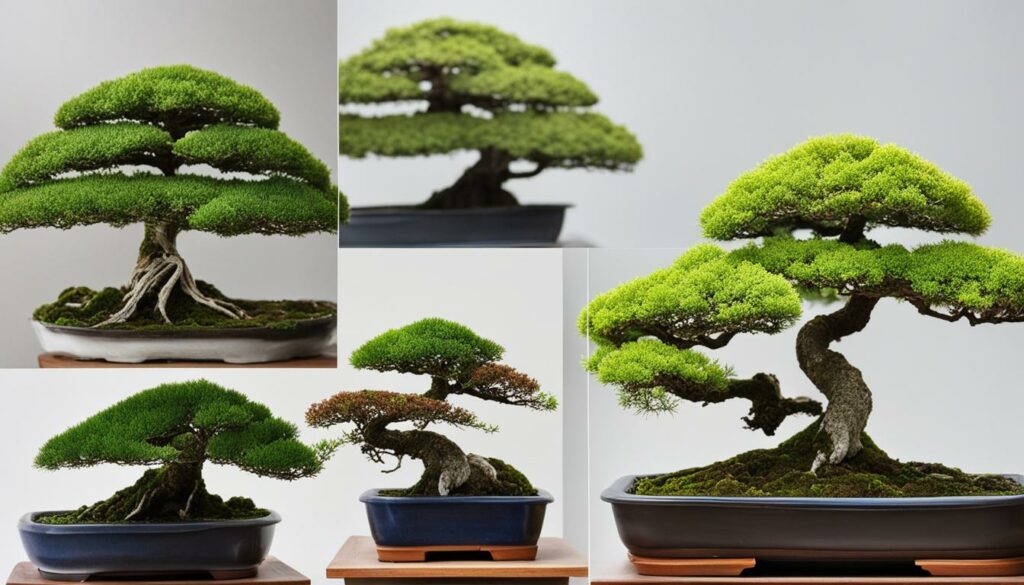
Expert Tip: To improve your success rate with air layering, create a ring cut around the branch you want to layer before removing the bark and wood. This ring cut will help direct nutrients and growth hormones to the exposed area, encouraging root growth.
Choosing the Right Plant for Air Layering
While air layering is an effective technique for bonsai cultivation, not all plants are suitable for this method. Choosing a plant with certain characteristics and attributes is crucial for air layering success. Some of the factors to consider include the plant’s age, health, and growth rate. Ideally, you should select a healthy plant with a moderate growth rate, as it will respond well to air layering.
The layering method you choose also depends on the plant type. While simple layering is suitable for many deciduous trees and shrubs, compound layering is better for conifers and broad-leafed evergreens. In compound layering, the outer bark and some of the inner bark are removed to expose the cambium layer and create a more favorable environment for root growth.
Here are some common layering methods and the types of plants they are suitable for:
| Layering Method | Suitable Plants |
|---|---|
| Simple Layering | Deciduous trees and shrubs, such as azaleas and maples |
| Compound Layering | Conifers and broad-leafed evergreens, like pine and magnolia |
| Air Layering | Plants with a woody stem, including ficus and elm |
Remember, selecting the right plant and layering method is critical to the success of air layering. Take the time to research and choose wisely to ensure the best possible outcomes.
Tools and Materials Needed
In order to successfully air layer a plant for bonsai cultivation, you will need to have the following tools and materials:
- Sharp pruning shears
- Grafting knife or sharp blade
- Rooting hormone
- Sphagnum moss
- Plastic wrap or aluminum foil
- Twine or electrical tape
Each tool and material plays a vital role in the air layering process. You will use the pruning shears to make the initial cut, the grafting knife or blade to remove any bark, and the rooting hormone to promote root growth. The sphagnum moss and plastic wrap or aluminum foil will create a moist environment for roots to develop, while twine or electrical tape will hold everything in place.
Step-by-Step Guide to Air Layering
Ready to put your air layering skills to the test? Follow these step-by-step instructions to successfully air layer a plant for bonsai cultivation:
- Step 1: Select a healthy branch for air layering. Make a cut roughly 1/3 of the way through the branch, being careful not to sever it entirely. Make a second cut a few inches below the first, again going 1/3 of the way through the branch. Remove the bark and any dead wood between the two cuts to create a clean, exposed area.
- Step 2: Apply rooting hormone to the exposed area, ensuring it covers the entire cut. This will encourage the growth of new roots.
- Step 3: Wrap damp sphagnum moss around the exposed area, ensuring it covers the rooting hormone. Use clear plastic wrap to hold the moss in place, ensuring it is fully sealed.
- Step 4: Wrap aluminum foil over the plastic wrap and use tape to secure both ends. This will protect the area from sunlight and promote root growth. Make sure the foil is tight and well-sealed.
- Step 5: Wait for the new roots to form. Depending on the plant species, this can take several weeks or months. Monitor the progress regularly, ensuring the moss remains damp and the foil is in place.
- Step 6: Once the new roots have formed, cut the branch below the new roots and pot the air-layered section as a new plant. With proper maintenance, it will grow into a healthy and vibrant bonsai.
Timing and Factors to Consider
Timing and environmental factors play a vital role in the success of air layering for bonsai reproduction. The ideal time to perform air layering is in early spring or late summer when the trees are in an active state of growth. This period provides sufficient time for the roots to develop before the onset of winter dormancy.
However, the timing may vary depending on the specific plant species and geographic location. Consult with your local gardening center or horticulturist to determine the optimal air layering time for your plant.
Environmental factors such as temperature, humidity, and light also affect air layering success. The temperature should range between 70-80°F (21-27°C), while the relative humidity should ideally be 80% or higher. Bright light exposure can also speed up root development, but direct sunlight can cause damage to the plant tissue.
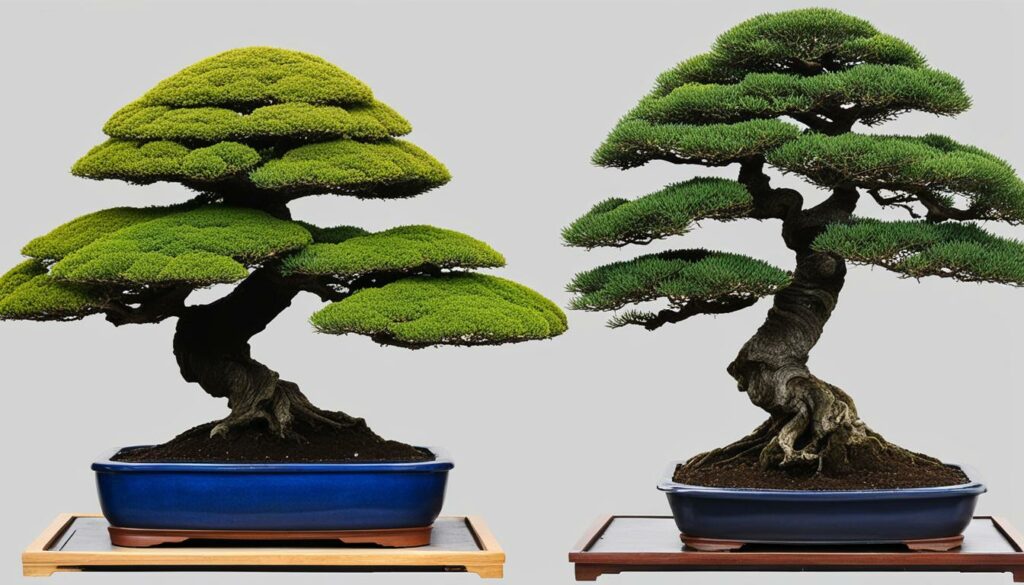
Considering these factors will maximize your chances of achieving successful bonsai reproduction through air layering.
Monitoring and Maintenance
Congratulations! You have successfully air layered your bonsai tree, and now it’s time to ensure the continued health and development of your newly formed roots. Proper monitoring and maintenance are crucial in promoting root growth and preventing damage or disease, so it’s essential to follow these recommended care procedures:
Watering
Water your bonsai tree regularly, maintaining a consistent level of moisture in the soil. Avoid overwatering, as this can cause root rot, and underwatering, which can stunt root growth. Check the soil’s dampness frequently, adjusting the watering frequency and amount as needed.
Fertilizing
Fertilize your bonsai tree every two weeks during the growing season using a high-quality bonsai fertilizer. This will provide essential nutrients for root and foliage development, enhancing overall tree health and growth.
Pruning
Regular pruning is required for bonsai cultivation, maintaining the desired shape and size of your tree. Always use sharp and clean pruning tools to avoid causing damage or introducing disease to your bonsai.
Repotting
Eventually, your bonsai tree will require repotting to encourage root growth and development. This process should occur every 2-3 years or when you notice visible signs of stunted growth or root-bound conditions.
Visual Inspection
Regularly examine your bonsai tree for signs of potential issues, such as pests, disease, or fungus. Early detection is crucial in addressing these problems before they cause significant damage or spread to other plants.
Troubleshooting Common Issues
Although air layering is a reliable technique for bonsai cultivation, issues may emerge during the procedure. Most of the problems are fixable with the right approach and tools. Here are some of the most common issues that bonsai enthusiasts face during air layering and tips for troubleshooting them:
Problem: Poor Root Development
If your plant isn’t rooting correctly, the first step is to examine the wound for any signs of healing. Inadequate healing can lead to poor root development. If you notice any injured tissue, remove the layers above and below the wound and make a new cut. Also, ensure that the wound is moist and warm and that the rooting hormone and moss are fresh.
Problem: Drying Out
If the air layering is drying out too quickly, it may need additional humidity. Utilizing a plastic bottle, cut the top 1.5 inches beneath the cap, near the bottom of the container. Afterward, add some water and place it onto the cut site, with the cap-end pointing down. It should create a sealed environment that will help to prevent the moss from drying out.
Problem: Insects or Fungal Infection
If your plant is suffering from pests or fungal infections, spot treat the wound only. To keep the pests away, lightly smear some petroleum jelly, which is an effective deterrent. Antifungal agents, such as hydrogen peroxide or cider vinegar, can help treat fungus infections.
Problem: Unhealthy or Dying Plant
If your plant is already unhealthy or dying, air layering can be challenging. Ensure that you are using a healthy branch and that you’re not attempting to produce bonsai from an already weak plant.
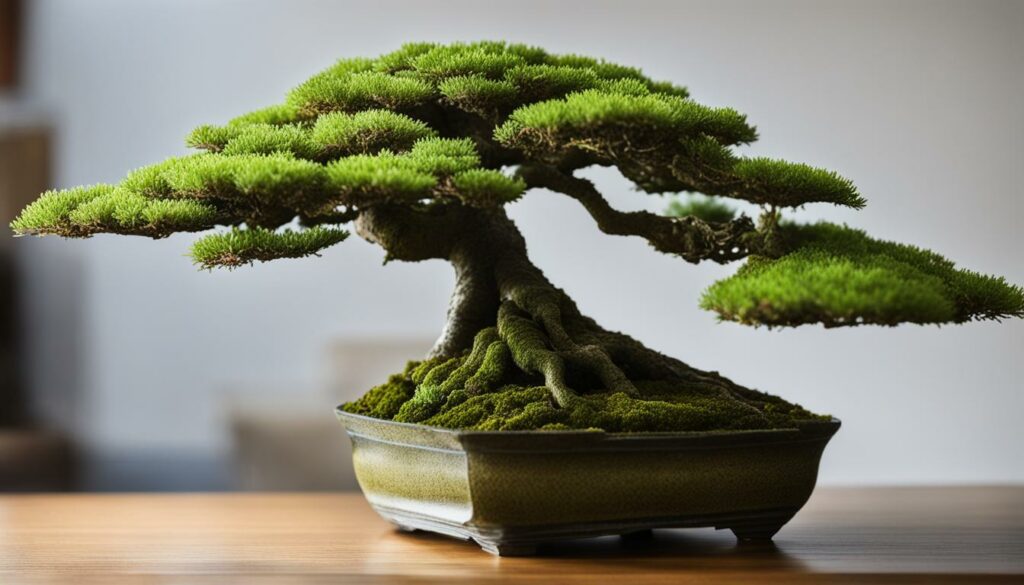
Problem: Slow Rooting
Patience is key to successful air layering. Root systems can take weeks or months to form, depending on weather conditions and the plant species. Avoid opening the air layering until sufficient root systems have formed, and make sure to keep the wound moist and humid for the best results.
Problem: Encountering Snap or Surface Roots
If the layering process is entering the roots or the snap of the branch, you’ve gone too deep. Also, surface roots won’t accept your cutting, and they tend to be too thick for performing air layering. The solution is to start again with a different branch or use other propagation methods.
Advantages and Disadvantages of Air Layering
As with any cultivation technique, air layering for bonsai cultivation has both advantages and disadvantages to consider. It’s important to weigh the pros and cons before deciding if this method is right for you.
Advantages of Air Layering
- Accelerated Growth: Air layering can jumpstart the growth of your bonsai tree. By promoting the development of a new root system, you can boost the overall health and vigor of your plant.
- Clone Desirable Bonsai: Air layering is an effective way to duplicate desirable characteristics of your bonsai tree. You can use this technique to reproduce a beloved species or develop a unique varietal.
- Develop Stronger Roots: Air layering results in robust root systems that are essential for maintaining the health and stability of your bonsai tree.
Disadvantages of Air Layering
- Requires Practice and Skill: Air layering is an advanced technique that requires precision and expertise to perform correctly. You may need to experiment with the process before achieving optimal results.
- Not Suitable for All Plant Species: Depending on the type of plant, air layering may not be a viable technique. Consult with a bonsai expert or do proper research before starting.
- Requires Patience: Though air layering can jumpstart growth, it still requires patience. The process can take several months to complete, and you’ll need to monitor and maintain the newly-formed roots to ensure continued growth and development.
Overall, air layering is a valuable technique for bonsai cultivation, but it’s not without its drawbacks. Careful consideration and research should be taken before implementing this method.
Alternative Bonsai Propagation Techniques
Air layering is not the only way to propagate bonsai trees. There are several other techniques you can try to expand your bonsai collection.
Bonsai Reproduction: Some of the common bonsai reproduction techniques include:
- Seed germination: Growing bonsai trees from seeds requires patience, as it can take many years for trees to grow to a desirable size.
- Cuttings: You can take cuttings from existing bonsai trees and root them in soil or water to develop new plants.
- Layering: A variation of air layering, this method involves bending a branch to the ground and covering it with soil to encourage root growth.
- Grafting: This advanced technique involves fusing the branches of two different bonsai trees to create a single tree with desirable characteristics.
Each of these techniques has its specific advantages and challenges.
| Bonsai Reproduction Technique | Advantages | Disadvantages |
|---|---|---|
| Seed germination | Easily accessible | Time-consuming, unpredictable results |
| Cuttings | Can produce identical clones of desirable trees | May require a rooting hormone for success |
| Layering | Can be done on existing trees, less time-consuming than seed germination | Requires patience, may not produce the desired results |
| Grafting | Can create a single tree with desirable characteristics | Requires advanced skills and experience, may not produce the desired results |
Experimenting with different bonsai propagation techniques can expand your knowledge and skills in bonsai cultivation. Who knows which method will inspire your next masterpiece!
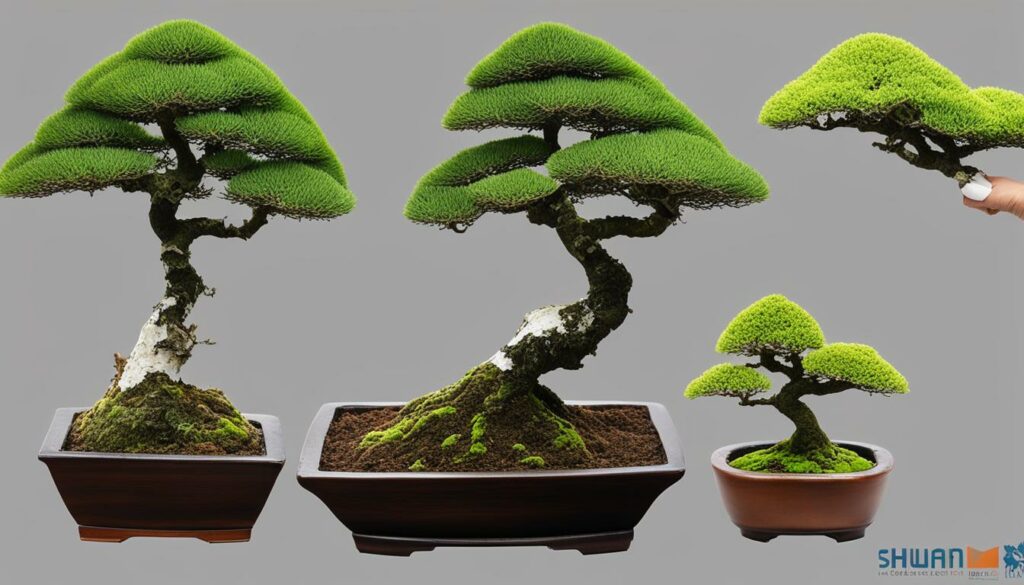
Advanced Applications of Air Layering
Now that you have a solid understanding of the basic principles of air layering, it’s time to explore some more advanced applications of this technique. By utilizing different layering methods and manipulating the wound area, you can create unique and visually appealing root structures that enhance the overall aesthetics of your bonsai tree. These advanced applications will take your bonsai cultivation skills to the next level.
The Wound Area
One advanced application of air layering involves manipulating the wound area to create unique root structures. By carefully carving the outer layers of the wound into intricate patterns or designs, you can guide the roots to grow in specific directions and shapes. This technique is often used by experienced bonsai growers to create elaborate and visually stunning root systems.
Layering Methods
Another advanced application of air layering is experimenting with different layering methods. Instead of a single layer, you can perform multiple layers on a single branch or trunk, creating more opportunities for root development and branching. Additionally, you can try using different materials for wrapping the wound area, such as sphagnum moss or plastic wrap, to see which yields the best results for your specific plant.
Enhancing Aesthetics
While the primary goal of air layering is to produce healthy roots for your bonsai tree, it can also be utilized to enhance the overall aesthetic appeal of your plant. By strategically placing air layers and manipulating the growth of the roots, you can produce unique and dynamic shapes that turn your bonsai into a true work of art.
Expert Tip: Experiment with different layering methods and wound area designs to create unique root structures and enhance the artistic potential of your bonsai tree.
Overall, mastering advanced applications of air layering takes time and patience, but the results are well worth the effort. By exploring different layering methods and manipulating the wound area, you can produce beautiful and unique root structures that will set your bonsai apart from the rest.
Air Layering Success Stories
Real-life success stories can provide inspiration and motivation for your bonsai cultivation journey. Here, we present some of the best air-layered bonsai success stories, highlighting the possibilities and rewards of mastering this technique.
1. A Japanese Maple Masterpiece
Keiko is an accomplished bonsai enthusiast who specializes in Japanese maple trees. Her most impressive creation is a stunning bonsai maple that she propagated through air layering. With vibrant foliage and intricate branching, this beautiful bonsai is a testament to the power of air layering.
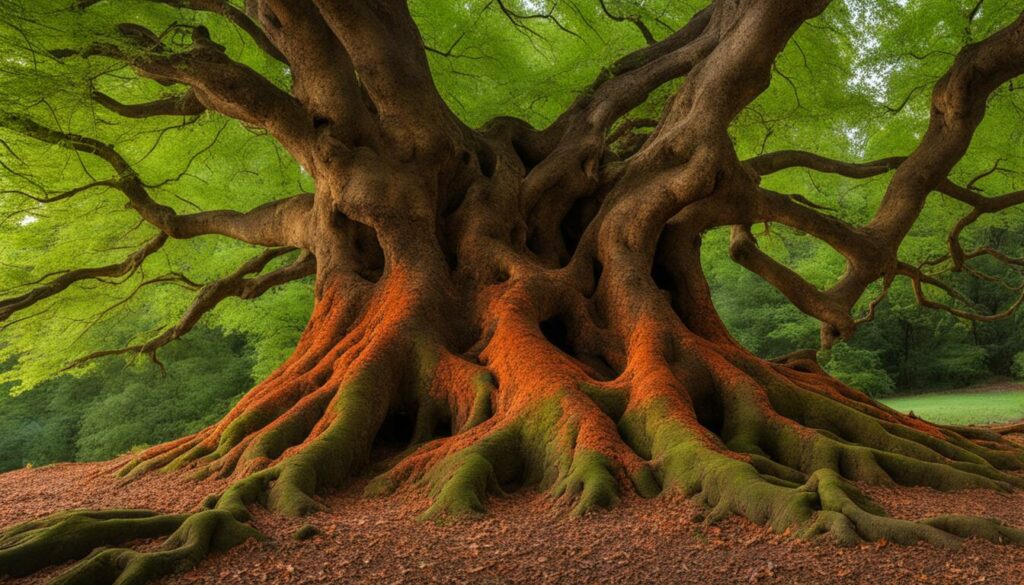
2. A Rare Fossil Tree Bonsai
Edward is a rare bonsai collector who specializes in unique and exotic varieties. His most prized possession is a 50-year-old Fossil Tree bonsai that he propagated through air layering. The intricate root system and unusual bark patterns of this ancient tree make it a truly remarkable specimen.
3. A Desirable Juniper Bonsai
Dave is an avid bonsai enthusiast who decided to propagate his most desirable juniper tree through air layering. With careful attention and patience, he successfully grew a new juniper bonsai that retained all the desirable qualities of the original tree, including its unique trunk shape and foliage characteristics.
“Air layering allowed me to reproduce this beautiful juniper tree exactly the way I wanted it, without having to start from scratch. It’s an incredibly efficient technique that any serious bonsai grower should master.”
These air layering success stories showcase the possibilities of propagating beautiful bonsai trees through this advanced technique. By following these examples and applying the knowledge you’ve learned, you too can create stunning, robust bonsai trees through air layering.
Best Practices and Expert Tips
To ensure that your air layering is successful, you need to follow some best practices and take advice from expert bonsai cultivators. Here are some tips that will help you refine your air layering skills:
Use the Right Technique
There are different layering methods that can be used for bonsai cultivation, but not all of them will work for every plant. Make sure to research which layering technique will work best for your specific plant before attempting it.
Choose the Right Time
The timing of air layering depends on the type of plant you are propagating. Generally, the best time is during the active growing season. However, always research beforehand to make sure you are timing the process correctly according to your plant species.
Provide Proper Care
After the air layering process is complete, it’s important to provide the appropriate care for your new bonsai tree. This includes providing it with proper watering, fertilizing, and pruning to help ensure its continued health and growth.
Monitor Closely
Keep a close eye on the plant during and after the air layering process. This will allow you to catch any issues that arise and take corrective action before it’s too late.
Take Expert Advice
Seek advice and guidance from experienced bonsai cultivators to help you refine your air layering skills and achieve optimal results. Learning from those who have mastered the technique can provide invaluable insights and help you avoid common mistakes.
Be Patient and Persistent
Air layering can be a time-consuming process, and it may not work on the first attempt. Be patient and persistent, and don’t give up on the technique if you meet some difficulties initially. Only through repeated practice will you become proficient in the method.
Conclusion
Now that you have learned about air layering for bonsai cultivation, you can take your passion for this living art form to the next level. By applying this advanced technique, you can grow bonsai with strong root systems that will thrive for years to come.
Remember to start with the basics of bonsai cultivation, understanding reproduction and the importance of root development. Choose the right plant for air layering and ensure you have all the necessary tools and materials.
Follow the step-by-step guide to air layering, considering the ideal timing and environmental factors. Once the process is complete, monitor and maintain your newly formed roots and troubleshoot any issues that may arise.
While air layering has its advantages and disadvantages, it remains a popular technique for bonsai enthusiasts. Explore alternative propagation methods and advanced applications of air layering to continue expanding your bonsai collection.
By following best practices and expert tips, you can refine your air layering skills and achieve optimal results. With dedication and patience, you can create a collection of bonsai trees that will bring joy and inspiration for years to come.
FAQ
What is air layering?
Air layering is a technique used in bonsai cultivation to propagate new trees with strong root systems. It involves creating a wound on a plant’s stem, wrapping it in a moisture-retaining material, and allowing roots to develop in the exposed area.
Why is air layering an effective technique for bonsai reproduction?
Air layering is considered effective for bonsai reproduction because it allows for the development of robust root systems, resulting in healthy and vibrant trees. It also enables growers to clone desirable bonsai and accelerate growth.
How do I choose the right plant for air layering?
When selecting a plant for air layering, it is important to choose one that responds well to the technique and has a suitable stem thickness. Different layering methods may also be more effective for certain plants. Consulting bonsai experts or reference materials can help guide your selection.
What tools and materials do I need for air layering?
To perform air layering, you will need a sharp knife or pruning shears to make the initial cut, rooting hormone to stimulate root development, plastic wrap or sphagnum moss to create a moisture-retaining environment, and string or twist ties to secure the wrapping material.
Can you provide a step-by-step guide to air layering?
Certainly! Here is a step-by-step guide to air layering:
1. Select a healthy, suitable plant.
2. Make an initial cut or wound on the stem, approximately one-third to halfway through the thickness.
3. Apply rooting hormone to the exposed area.
4. Wrap the wounded area with moist sphagnum moss or plastic wrap.
5. Secure the wrapping material with string or twist ties.
6. Monitor the development of roots and maintain the moisture level of the wrapping material.
7. Once roots have formed, carefully cut below the air layer and pot the new plant in appropriate bonsai soil.
Remember to regularly monitor and care for the newly layered plant to ensure its continued health and growth.
When is the best time to perform air layering?
The ideal time to perform air layering is during the plant’s growing season, typically in spring or early summer. This ensures that the plant is in an active growth phase and has sufficient energy to develop new roots. However, the specific timing can vary depending on the plant species and local climate.
What factors should I consider when performing air layering?
When performing air layering, it is important to consider factors such as temperature, humidity, and adequate moisture. These environmental conditions can greatly impact the success of root development. Additionally, regular monitoring and appropriate care are crucial for the newly formed roots to thrive.
What should I do to maintain the newly formed roots after air layering?
After air layering, it is essential to carefully monitor and maintain the newly formed roots. This includes providing the proper amount of water, ensuring the plant receives sufficient sunlight, and protecting it from extreme weather conditions. Regularly inspect the health of the roots and adjust care as needed.
What are some common issues that can arise during air layering?
During air layering, some common issues that bonsai enthusiasts may encounter include insufficient root development, excessive moisture, mold or fungal growth, and failure of the air layer to take root. These problems can often be addressed by adjusting watering practices, monitoring environmental conditions, and making appropriate adjustments to the air layering process.
What are the advantages and disadvantages of air layering?
Air layering has several advantages, including accelerated growth, the ability to replicate desirable bonsai, and the development of strong root systems. However, it can be a time-consuming process and may not always be successful due to various factors such as plant health, environmental conditions, or improper implementation.
Are there alternative propagation techniques for bonsai?
Yes, air layering is just one of many propagation techniques used in bonsai cultivation. Other common methods include seed sowing, cuttings, grafting, and division. Each technique has its own advantages and considerations, so exploring different options can expand your bonsai cultivation possibilities.
How can I advance my air layering skills and enhance root development?
Once you have mastered the basics of air layering, you can explore advanced layering methods to further enhance root development and artistic potential. These methods include serpentine layering, multiple air layers on one plant, or strategically manipulating the layering process to create unique root structures. Experimentation and learning from experienced practitioners can help you refine your air layering skills.
Can you share any success stories related to air layering?
Absolutely! In this section, we showcase success stories of bonsai enthusiasts who have achieved remarkable results through air layering. These stories serve as inspiration and demonstrate the possibilities that can be achieved by mastering this technique.
What are some best practices and expert tips for air layering?
To maximize your air layering success, it is crucial to follow best practices and learn from experienced bonsai practitioners. This section provides expert tips and recommendations on various aspects of air layering, including selecting the right plants, timing, monitoring, and troubleshooting common issues.
